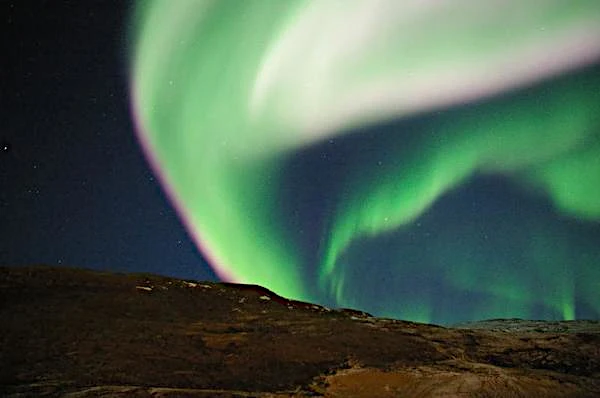
Polar auroras are luminous phenomena that mainly appear in regions near the magnetic poles. They result from the interaction between the solar wind and Earth's magnetic field. Charged particles from the solar wind are guided by magnetic field lines toward high latitudes, where they excite atmospheric molecules, causing light emission.
When electrons and protons from the solar wind penetrate the ionosphere, they collide with oxygen and nitrogen atoms. These collisions raise the electrons of the atoms to an excited state. When these electrons return to their ground state, they emit photons whose wavelengths determine the color of the aurora.
When these electrons return to their ground state, they emit photons whose wavelengths determine the color of the aurora, with green being the most common. The density and energy of solar particles influence the intensity and altitude of auroras.
Auroras can appear as curtains, arcs, crowns, or spirals. Their occurrence depends on solar activity, measured by the Kp index. Periods of high solar activity, especially during solar flares or CMEs, increase the likelihood of spectacular auroras.
| Characteristic | Description | Typical Value | Comment |
|---|---|---|---|
| Altitude | Aurora formation zone | 80 to 300 km | The lowest auroras occur in the lower ionosphere, the highest in the thermosphere |
| Colors | Photonic emission according to the type of excited molecule | Green, red, purple, blue | Green is the most common; red and purple appear during intense solar activity |
| Duration | Average persistence time of an aurora | From a few minutes to several hours | Duration varies depending on the stability of the solar wind and geomagnetic activity |
| Magnetic Intensity | Influence of Earth's magnetic field on particle trajectory | Variable depending on geomagnetic storms | Intense geomagnetic storms cause auroras visible at lower latitudes |
Sources: NASA, NOAA Space Weather, Springer.